Warships. Cruisers. Neither steal nor guard
In the previous article about La Galissoniere I promised that I would be distracted by Italians. Yes, it will, because such a show, which unfolded in the confrontation between the two Mediterranean countries, France and Italy, can only be viewed in any way. So to facilitate comparisons and comparisons - links at the end of the article, and we rush into the arms of Regia Marina.
So, Reggia Marina, or the Royal Navy of Italy. The name is loud, but what is the name, the essence was so-so.
Now it is very difficult to say how the Italians were able to starve their fleet, especially not fighting in the First World War. But the fact is that, at the beginning of the war, they had 3 Quarto cruisers, 6 Nino Bixi units and 4 Trento cruisers, but by the end, two out of three Quatros remained relatively combat-ready. Well, the Germans and Austro-Hungarians “helped”, more precisely, 5 cruisers, which Italy received as trophies / reparations.
And in the end, the war ended, there are almost no cruisers, but then the French with their ambitions ...
Yes, the French issued. After all, it was they who invented the new class of ships, which later received the name of leaders.
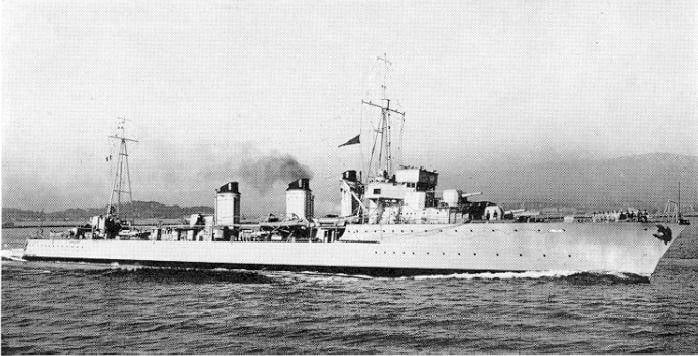
It so happened that in the Mediterranean Sea there were only two decent maritime powers, Italy and France. And, of course, the confrontation immediately began. The French began it by building the cruisers of the Duguet Truen type already considered at our place. Nice ships, the amount of three units.
But then a second blow was dealt to the Italians in the form of leaders. The French leaders Jaguar, Lyon and Aigle had two virtues: they were able to catch up with any Italian destroyer and simply tear it to pieces with their artillery. And from light cruisers, leaders could trivially slip away, since speed allowed.
And the Italian admirals got the idea that it would be nice to adopt a class of scout cruisers that could be used as high-speed reconnaissance. These ships were supposed to confront the French leaders, not inferior to them in speed and superior in armament, of course. A sort of subclass of counter leaders.
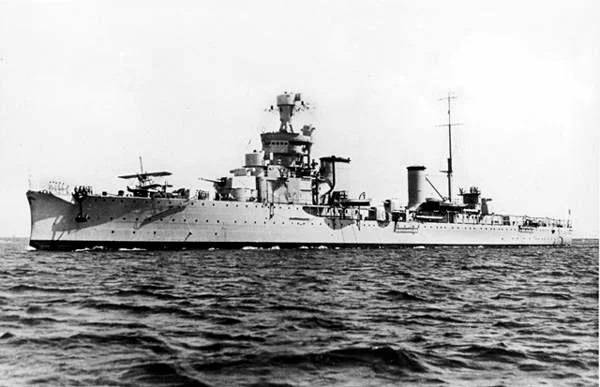
In addition, it was planned to assign to these ships responsibilities for leading the destroyers, participating in blockade operations, guarding linear forces fleet, reconnaissance, patrol and patrol services.
At the same time, of course, ships should be excellent in terms of price / quality ratio so that they can be built with a larger number and a cheaper price.
What was the Italian style? Everyone immediately remembered the “sevens” and “Tashkent”. That's right, speed plus seaworthiness with defective booking and range.
It was under these performance characteristics that the development of scout cruisers began. Maximum speed, decent seaworthiness, strong weapons, everything else on a residual basis. That is, the speed is 37 knots, armament of 8 guns with a caliber of 152 mm, the rest as it turns out.
Initially, they wanted to build 6 cruisers, but then you know, it’s so difficult at all times to meet the budget ... Especially in a country like Italy, where everyone wants to live ...
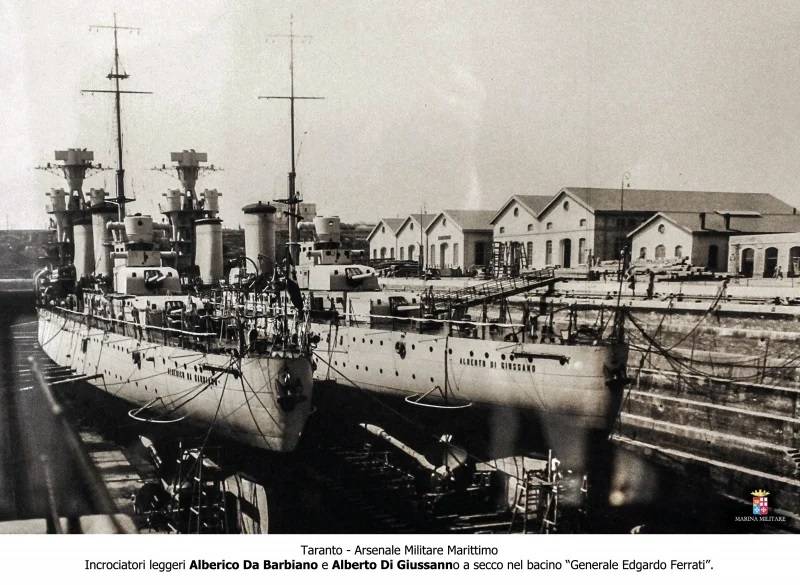
In general, the budget mastered only 4 ships. All of them went into operation in 1931. Type received the name "Condottieri A".
Where does this name come from? Plunge into history middle ages. And there you can find out that “condottieres” (in Italian “condottieres”) come from the word “condotta”, that is, a contract of employment for military service. Condotta was entered into by the commune cities of Italy with the commanders of mercenary detachments who were hired to protect their safety. And the commander of such a detachment was called a condottiere.
The condottiere concluded contracts, and also received and distributed to his subordinates a fee called the “soldo”. So, in fact, the word "soldier" happened. In general, those were still guys. Corresponding to dashing times.
So, the condottieres commanded the soldiers. And the cruisers dominated the destroyers. Well, here the message is clear. Since this was the first and not the last series with a hint, it was called "Kondotieri A". The names of the ships were given in honor of the most famous representatives of this class.
"Alberico di Barbiano." In 1376, this signor founded the first Italian detachment of hired soldiers under the name "Italian company of St. George", at which he opened a military school. Many famous Italian condottiers came out of the military school of Alberico di Barbiano: Braccio di Montone, Muzio Attendolo.
"Alberto di Giussano" - in honor of the legendary condotier of the times of the Lombard League wars against Frederick Barbarossa in the XII century.
Bartolomeo Colleoni is an Italian condottiere who lived to be 15 years old in the 75th century.
“Giovanni di Medici” is the last great condottier, also known as Giovanni delle Bande Nere (“Giovanni with black stripes on the coat of arms”), he is also “Big Devil”, father of Cosimo I, Duke of Tuscany.
What kind of ships were they? And the ships were very difficult on the one hand and very simple on the other.

We take the project of the destroyer "Navigatori", extend the hull, put the power unit of the echelon type. Powerful. More powerful than the destroyer. The result is something so long, narrow, with predatory contours of the destroyer, but just as fragile. The case was really not very durable.
But in terms of armament they did not stint. Four classic Italian two-gun cruising towers with a pair of 152-mm guns of the 1926 model. Total 8 trunks of the main caliber. And the same drawback as on heavy cruisers - both barrels in one cradle, which predetermined a noticeable dispersion of shells.
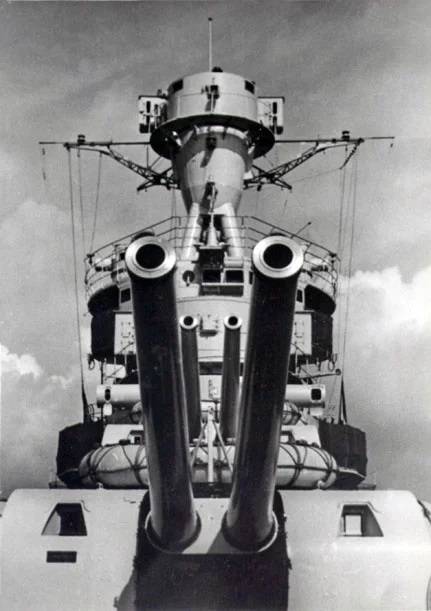
An interesting move was the placement of the then fashionable spotter. The aircraft catapult was located in the nose, as well as on heavy cruisers of the Trento type. But, unlike the heavy cruiser, there was no place on the light cruiser in the bow. Therefore, the aircraft were placed in a hangar, which was equipped in the lower tier of the nasal superstructure, from where the seaplane was fed to the catapult on a half-tank by special rail tracks bypassing the towers on a trolley.
TTX of light cruisers of the Kondotieri A type:
Displacement:
- standard: 5184-5328 t;
- full: 7670-7908 t.
Length: 160 m / 169,3 m.
Width: 15,5 m
Draft: 5,4-5,95 m.
Booking:
- belt - 24 + 18 mm;
- traverses - 20 mm;
- deck - 20 mm;
- towers - 23 mm;
- cutting - 40 mm.
Engines: 2 ТЗ "Bellutstso", 2 coppers "Yarrow-Ansaldo", 95 000 hp
Speed: 36,5 knots.
Cruising range: 3 nautical miles at a speed of 800 knots.
Crew: 521 people.
Armament:
Main caliber: 4 × 2 - 152 mm / 53.
Flak:
- 3 × 2 - 100 mm / 47;
- 4 × 2 - 20 mm / 65;
- 4 × 2 - 13,2 mm machine guns.
Mine-torpedo armament: 2 twin-tube 533-mm torpedo tubes.
Aviation group: 1 catapult, 2 seaplanes.
Ships could be used as mine loaders, a stockpile of 138 minutes, except for Alberto di Giussano.
In the late 1930s. all cruisers passed hull reinforcement after a series of damage in stormy weather. In 1938-1939 anti-aircraft weapons reinforced with 4 paired 20 mm machine guns.
In general, the hull of the new type of cruisers turned out to be disproportionately long. The ratio of body length to width exceeded 10: 1. The nose of the ship had an outdated already straight shape with a slightly protruding ram. The hull structure inherited from the destroyer turned out to be too light and fragile. I had to strengthen the hull with two longitudinal bulkheads along the entire length of the ship. Well, of course, there were 15 transverse bulkheads that divided the hull into 16 waterproof compartments.
Long and narrow cruisers could not be called stable artillery platforms. In stormy weather, the roll reached 30 °, which made controlling the ship and the life of personnel very difficult.
I had to work with the power plant, which was also facilitated to the maximum. The result was something powerful, but very fragile. Power plants were able to increase from 95 to 100 thousand horsepower, but it was a small compensation for fragility.
Lightweight, fast, strong cruiser - this is the dream of any admiral. The Kondotieri pleased their command because they set one record after another.
Alberto di Giussano - 38,5 knots.
Bartolomeo Colleone - 39,85 knots.
Giovanni della Bande Nere - 41,11 knots.
Alberico di Barbiano developed 42,05 knots in 32 minutes, with a maximum accelerated power of the machines of 123 hp.
It is appropriate to recall the Soviet (actually Italian) leader Tashkent, which, with a displacement twice as small as a cruiser of the Kondotieri A type, produced 43,5 knots.
The average speed of the Alberico di Barbiano was 39,6 knots. And at the time of commissioning, the cruiser became the fastest ship in its class in the world.
It is clear that Mussolini used this to propagate the successes of the fascist regime, but there was a slight scam. "Alberico di Barbiano" went on a record run, not having half the gun turrets, in addition, a lot of weapons and equipment were removed.
In real conditions, the Italian "champions" rarely squeezed more than 30 knots. The use of cars in the afterburner could lead to their failure, or simply to the destruction of the hull.
The case when ostentatious runs to set a record is one thing, but real combat operation is completely different. And the speed records set in ideal conditions could not help Kondotieri get away (or catch up) from the enemy, but the maximum lightening of the structure just greatly reduced combat capabilities. But about this practical part a bit later.
The Italian sailors themselves with subtle humor called their cruisers "Cartoons." From "Animated film" - "Cartoni animati". Cardboard, it’s in Russian, in Italian, in principle, the same thing means.
In general, the idea of multi-layered reservations was both new and smart. The only question is implementation. And it was implemented in Italian. The armor belt was as indicated above. But 24 mm is in the middle part, in the extremities of 20 mm. And it was such vanadium armor, that is armor. And behind the armored belt was an 18-mm shatterproof bulkhead from conventional armor. On top of this magnificence, an armored deck of 20 mm thick was made of ordinary chromium-nickel steel.
The main caliber towers were protected by 23 mm thick armor.
The conning tower had an armor thickness of 40 mm, command-range posts were protected by 25 mm armor. This is somewhere in the middle between the cruiser and the destroyer.
The total booking weight on cruisers of the Alberico da Barbiano type was 531,8 tons, which was 11,5% of the standard displacement.
In general, the reservation was completely inadequate, as it was penetrated by 120-130 mm shells (GK destroyers of that time) at all real combat distances. It’s scary to even think about cruising calibers, but we will return to this.
With the artillery of the main caliber, Pinocchio’s adventure came out. The guns, as I said, were new. The manufacturer, the company "Ansaldo", tried and made a very decent gun, which produced a shell weighing 50 kg with an initial speed of 1000 m / s at a distance of 23-24 km. Gun rate - 4 rounds per minute.
Beautiful, is not it? But no.
To begin with, it turned out that the guns have a very small resource of barrels plus a decent dispersion of shells. I had to lighten the projectile to 47,5 kg, and reduce the initial speed to 850 m / s. This solved the wear problem, but the accuracy remained unsatisfactory.
The high dispersion of the shells was explained by two factors:
1. The trunks were located in one cradle and too close, the distance between them was only 75 cm. The shells fired in one gulp knocked each other off the trajectory with perturbed air flows.
2. I already wrote about this, the Italian industry was not famous for the accuracy of the manufacture of shells. Accordingly, the balanced shells did not fly the way the Italian gunners wanted, but in accordance with the laws of physics.
Alas, with the main caliber the light cruisers in Italy had the same problems as the heavy ones. These tiny towers literally squeezed into the guns were something.
We have repeatedly discussed the universal caliber, these are the well-known installations of General Minisini. This gun based on Skoda’s guns was outdated as early as World War I, but due to its low cost, it was useful for lack of fish.
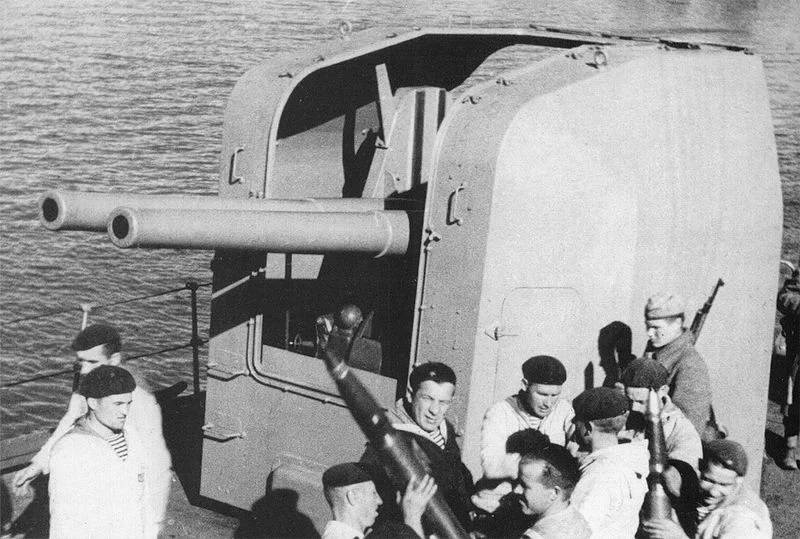
These guns also served as Austro-Hungarians in the First World War, fought in the Italian Navy in the Second World War, and by the way, they were also noted in the Soviet one. 100 mm Minisini were mounted on our light cruisers Chervona Ukraine, Krasny Krym and Krasny Kavkaz.
The loading was a unitary cartridge, the guns were equipped with a rammer with pneumatic drive. The elevation angle is 45 °, the initial velocity of the projectile is 880 m / s, the firing range is 15 m. Two installations were placed side by side in the middle of the ship, the third closer to the stern.
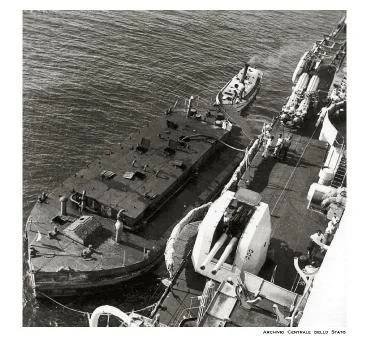
In general, the guns did not meet modern requirements as air defense.
Short-range anti-aircraft artillery in general was a masterpiece on the theme "I blinded him from what was." Two 1915 Vickers-Terni anti-aircraft guns of 40 mm caliber. That is, yes, this is Pom-pom from Vickers, from which everyone really spat on all the fleets.
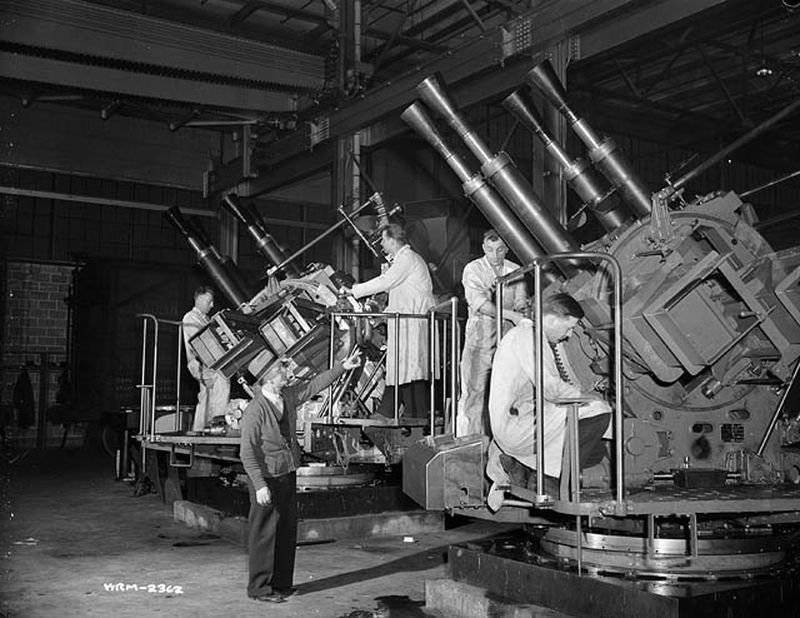
But the Italians went even further, they began to produce this monster under a license from Terni, and, in principle, all of it was nothing, but for some reason they made the power of the machine not tape, but store. That is, the Vickers QF Mark II was already rubbish, but here it also worsened. Bravissimo.
But these two units were installed on the sides of the conning tower, so as not to shoot down, so scare the pilot of an enemy aircraft.
Thank God, after the use of ships and military use in Spain, the 40 mm Vickers were removed and 20 mm twin Breda Mod.1935 units were installed instead. Four of them were placed on the ships - two in place of the Vickers on the sides of the wheelhouse and two on the aft superstructure.
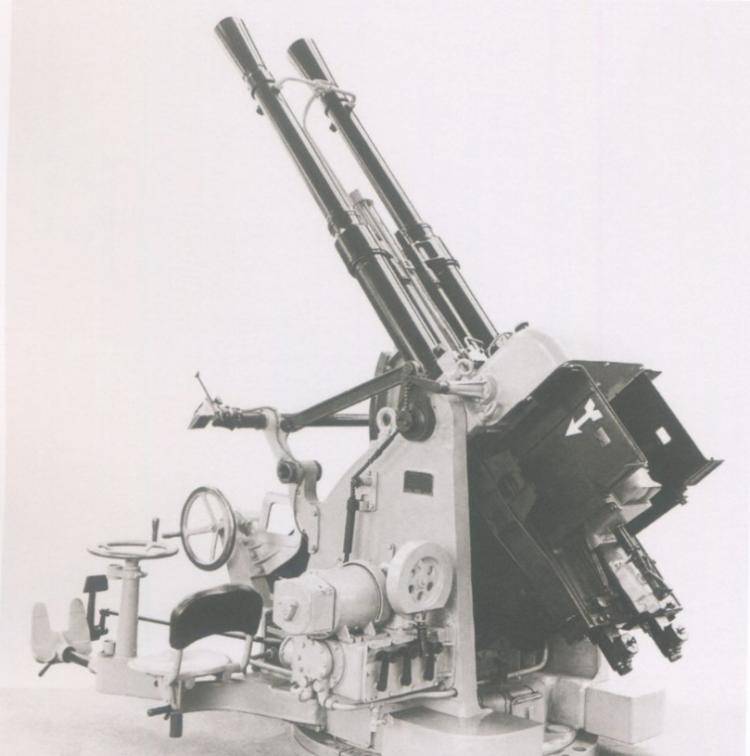
I don’t even want to talk about heavy machine guns from “Bred”, everything was said about them a long time ago and by the Italians themselves.
In general, anti-aircraft defense is not about Italian ships, although it’s strange that it was not anti-aircraft defense that brought to the bottom of the cruiser.
Mine-torpedo weapons were also with tricks. In general, three of the four cruisers could easily put a minefield. For this, each of the ships had two rail tracks for mines.
Theoretically, each cruiser turned into a minzag could take on board 169 mines Bello or 157 Elia. Theoretically, this is because mines did not give the opportunity to shoot from the stern towers. Absolutely. Plus, it was virtually impossible to use torpedo tubes.
If to reduce the ammunition load of mines by half, that is, leave 92 Bello mines or 78 Elia mines, then the ship again became a cruiser and could use its weapons.
Aft were two Menon-type bombers. Ammunition: sixteen 100-kg and twenty-four 50-kg bombs.
The air group of each ship consisted of two seaplanes. At first it was CRDA Cant-25 AR, then they were replaced with Imam RO-43. In general, the replacement of "so-so" with "yes could have been worse."
According to the conditions for the crew, the cruiser was considered very unsuccessful. Still, the cruiser’s crew squeezed into the size of an overgrown leader is inconvenient.
How did you fight? In principle, like all Italian ships, that is, not very. And all perished.
The Alberico di Barbiano, the lead ship of the series, was laid down on April 16, 1928, launched on August 23, 1930, and entered service on June 9, 1931.
July 9, 1940 received a baptism of fire in battle at Calabria. The results of the application were so impressive that on September 1, 1940 was converted into a training vessel. However, the need forced, and on March 1, 1941 the cruiser was again put on full alert.
December 12, 1941, along with the cruiser "Alberto da Giussano" set off to transport fuel to the Italian and German troops in Africa. Despite the high speed of movement, both cruisers were discovered by British intelligence and 4 destroyers were sent to intercept them, three British ("Legion", "Sikh" and "Maori") and the Dutch "Isaac Svers".
The destroyers easily caught up with the cruiser and entered into battle with them, which went down in history as a battle at Cape Bon on December 13, 1941.
During the battle, Alberico di Barbiano received three torpedoes from the destroyers and sank as expected.
Alberto di Giussano. Laid on March 29, 1928, launched on April 27, 1930, entered into service on February 5, 1931.
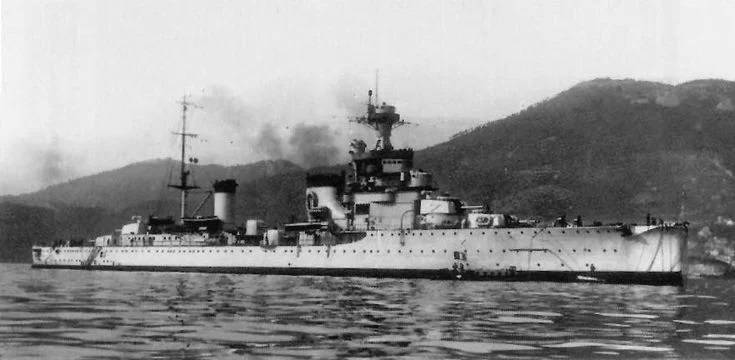
He participated in various exercises of the Italian Navy as part of the 2nd squadron, and assisted the Spanish nationalists during the Civil War in Spain.
After the outbreak of World War II, he participated in the installation of minefields in August 1940 near Pantelleria, supplied convoys and transported troops to North Africa.
December 13, took part in the battle at Cape Bon, but unlike the "Alberico di Barbiano", the ship had only one torpedo. The ship caught fire and sank.
Bartolomeo Colleoni. Laid down on June 21, 1928, launched on December 21, 1931, entered into service on February 10, 1931.
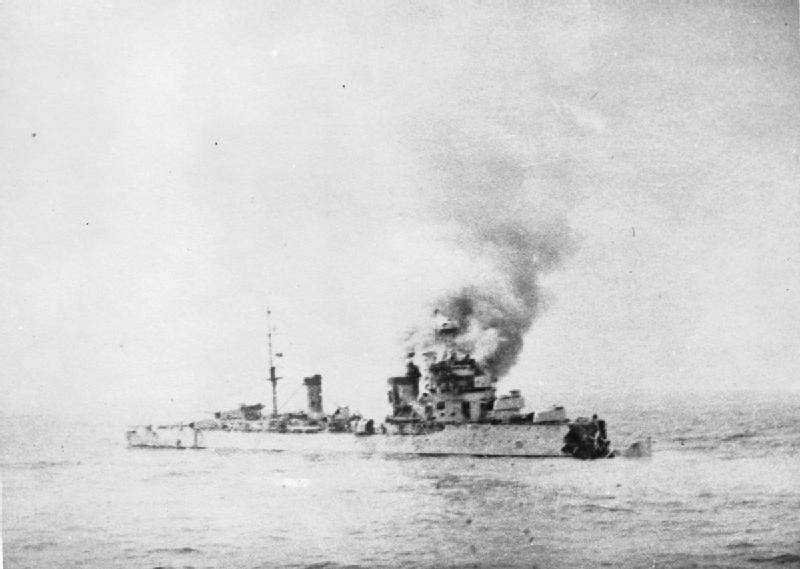
Until November 1938 he served in the territorial waters of Italy, after which he went to the Far East together with the cruiser Raimondo Montecuccoli. December 23, 1938 "Bartolomeo Colleoni" arrived in Shanghai, where he remained until the outbreak of World War II, and then returned to Italy.
With the outbreak of World War II, he participated in the laying of mines in the Sicilian Canal and escorting convoys to North Africa.
July 17, 1940 "Bartolomeo Colleoni", accompanied by "Giovanni delle Bande Nere" went to the island of Leros, where there was a large group of British ships. On the night of July 19, the Italian squadron entered battle with the Australian light cruiser Sydney and five destroyers.
Sydney gunners hit a 152-mm shell in the engine room of an Italian cruiser, completely immobilizing it. The British destroyers Aileks and Hyperion sent 4 torpedoes to the cruiser, two hit the Bartolomeo Colleoni, after which the ship sank.
Giovanni delle Bande Nere. Laid down on October 31, 1928, launched on April 27, 1930, entered service in April 1931.
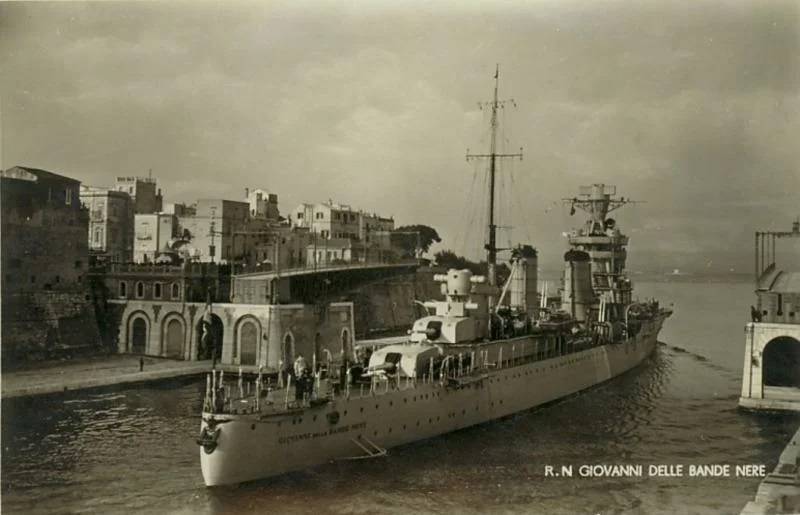
Initially served in the waters of Italy, during the Civil War in Spain, he assisted the troops of General Franco.
In June 1940, after the official entry of Italy into World War II, he set mines in the Strait of Sicily. Then he covered the convoys, en route to North Africa.
While escorting the Tripoli convoy Leros, Giovanni delle Bande Nere and Luigi Cadorna joined the battle at Cape Spada on July 17, 1940. The ship was damaged, having received 4 hits from the Sydney, but Italian gunners also damaged the Australian cruiser with return fire. Unlike Bartolomeo Colleoni, Giovanni delle Bande Nere was able to return to Tripoli.
From December 1940 to 1941, Giovanni delle Bande Nere performed assignments for the protection of convoys.
In June 1941, “Giovanni delle Bande Nere” and “Alberto da Giussano” erected a minefield near Tripoli, which in December 1941 came across the British “K” compound: the Neptune cruiser and the Kandahar destroyer sank, two more cruisers , Aurora and Penelope were injured.
A similar mine-laying operation was carried out in July 1941 in the Strait of Sicily.
In 1942, the "Giovanni delle Bande Nere" participated in the second battle in the Gulf of Sirte, where the cruiser Cleopatra was damaged by fire, disabling its entire radio navigation system and two gun turrets.
March 23, 1942 "Giovanni delle Bande Nere" fell into a storm, during which it was damaged. On the way to repair in La Spezia on April 1, 1942, the cruiser was torpedoed and sunk by the British submarine "Urge", which hit him with two torpedoes.
The Giovanni delle Bande Nere was the most productive of the four cruisers, having completed 15 missions during the war and traveled 35 miles with battles.
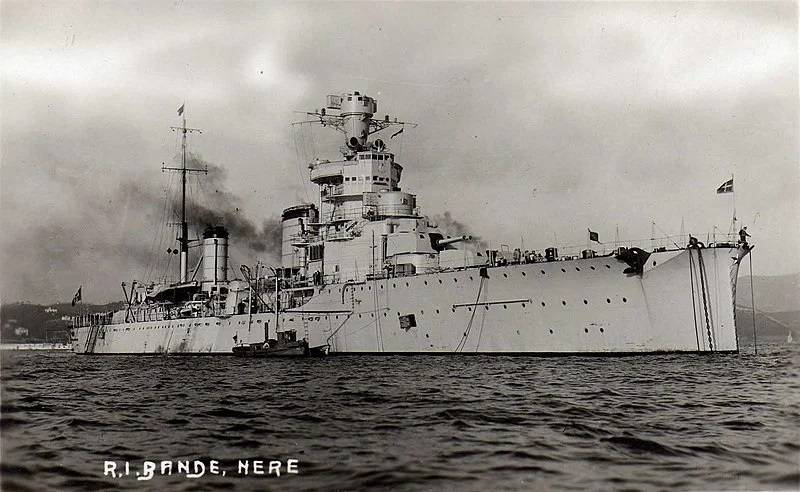
So, what can be said about the ships of the class "Condottieri A". Nothing good. Yes, beautiful ships, but when the Italians did not build beautiful ships? In fact, under-cruisers are more likely leaders on steroids.
Yes, it seems to be fast, but at the same time the cases are very fragile. The artillery is powerful, but ineffective. Very weak air defense, but it is even surprising that all four ships were sunk without the participation of aviation. But - ships of the weaker class. Just those who were supposed to hunt and destroy.
Indeed, they could neither steal nor guard, they could do anything. And so they finished the service, in fact (except for the "Banda Nere") ingloriously.
But it was the first Italian pancake. Yes, he came out lumpy, but Emil Bertin didn’t shine with the French either. After these ships, the time came for another series of Kondotiers.
To be continued ...
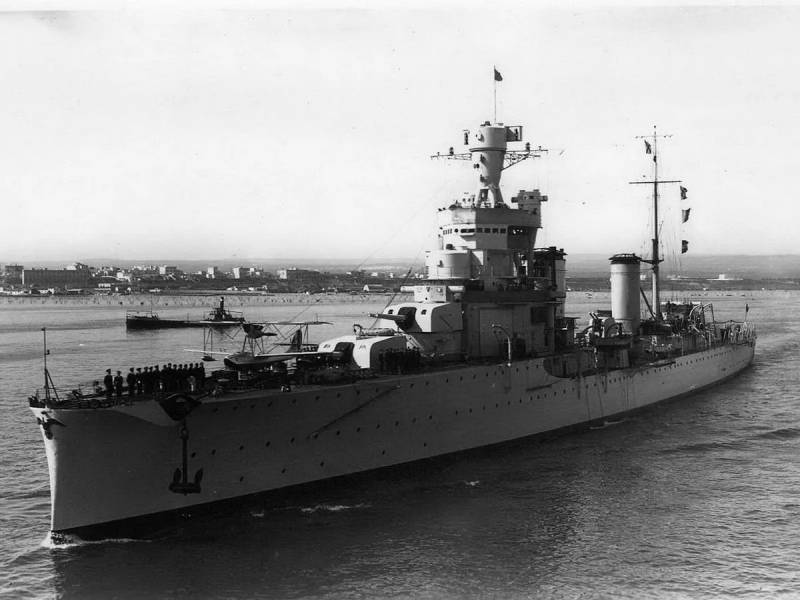
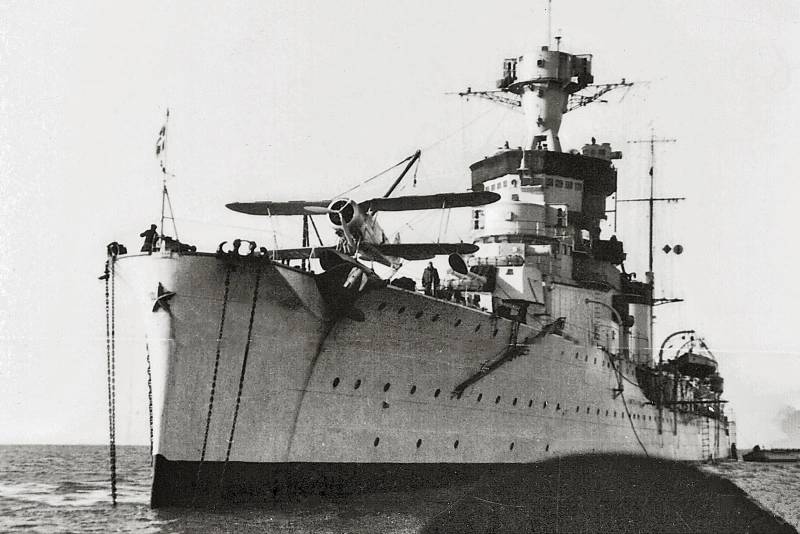

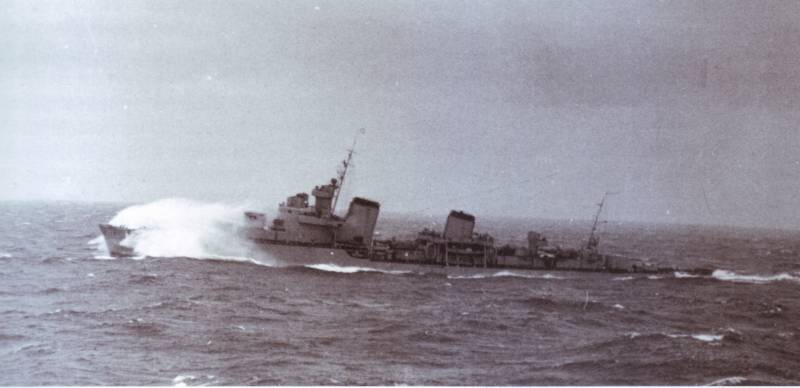
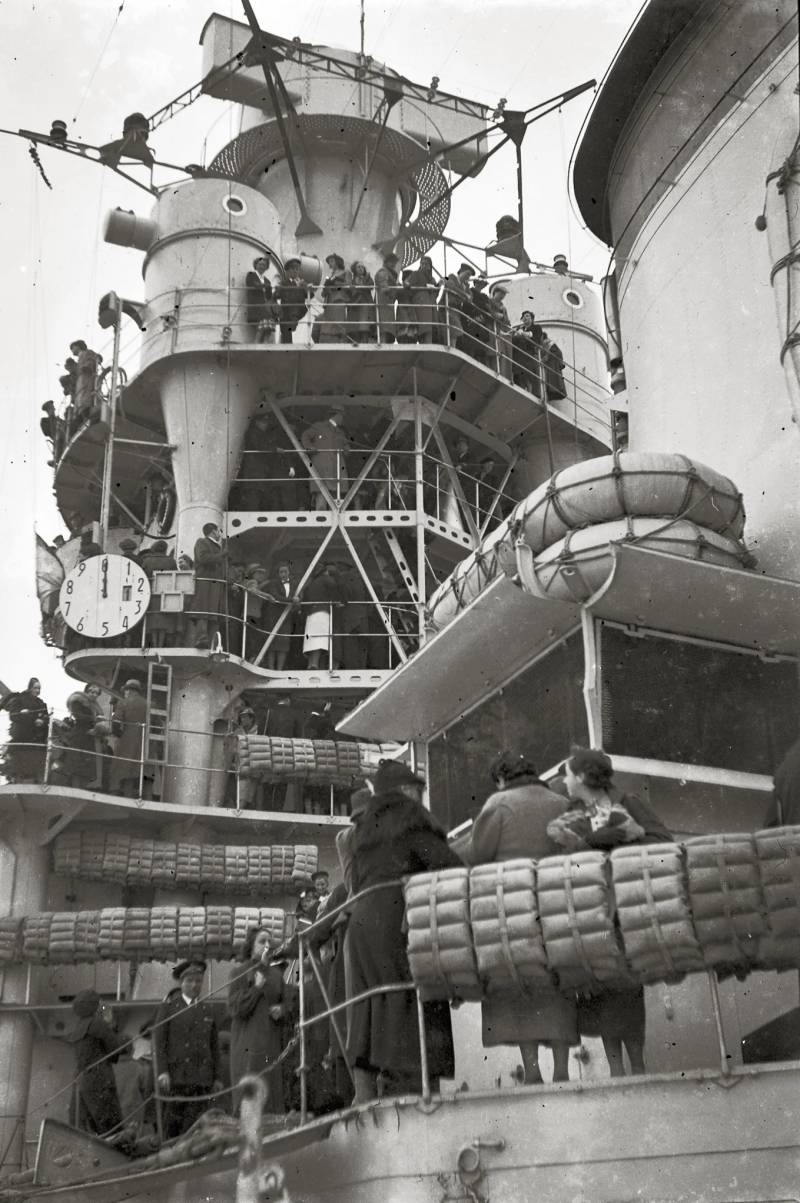
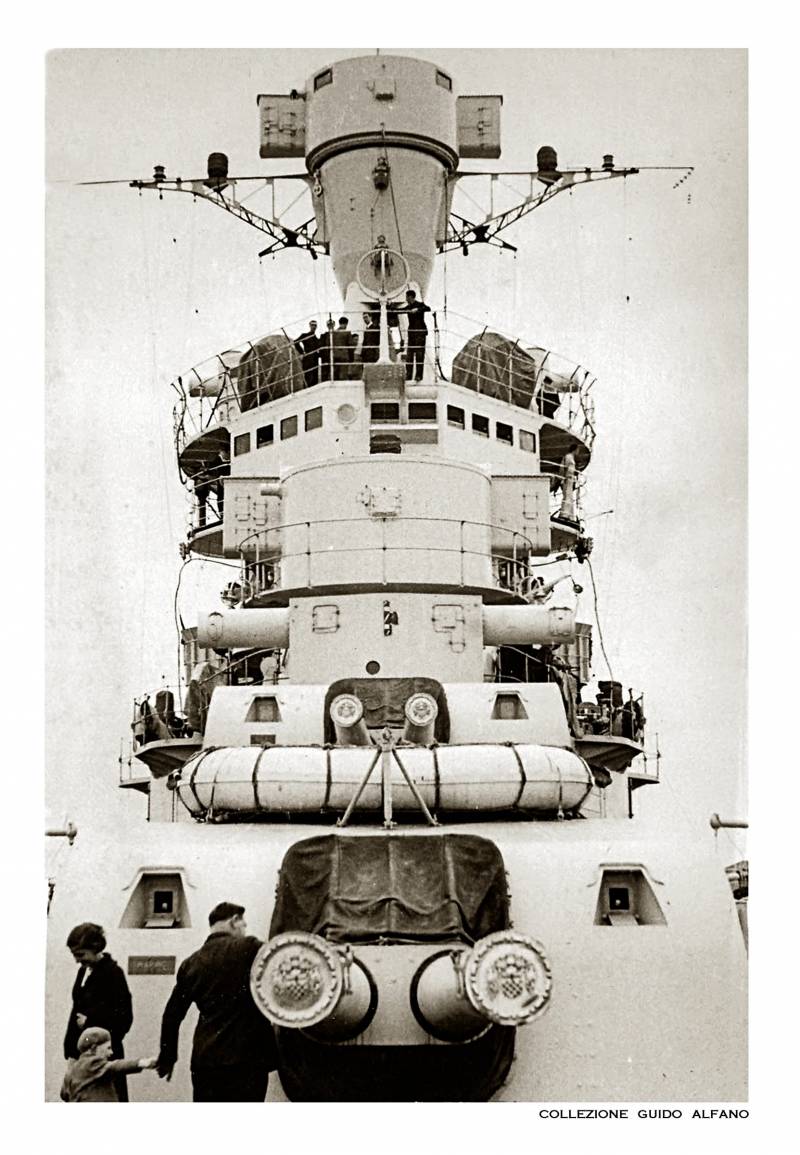
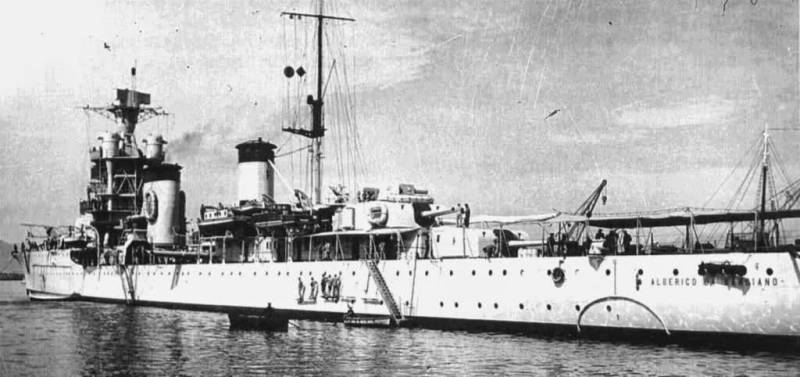
Information